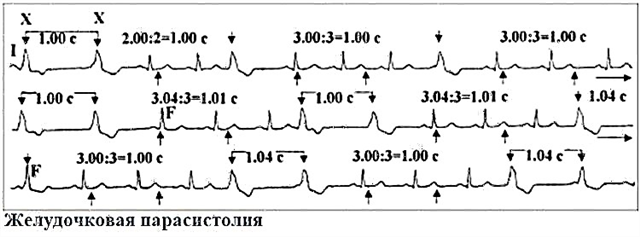Chronic tonsillitis belongs to the group of infectious and allergic pathologies, characterized by damage to the mucous membrane of the tonsils. In some cases, lesions of the palate, tongue and pharynx may be observed as symptoms. In this case, a stable inflammatory process is formed.
Tonsils play an important role in the child's body, being a barrier against pathological microorganisms, viruses, infections. The insidiousness of tonsillitis lies in provoking infection of other organs against the background of damage to the epithelium of the tonsils.
 Today, children's chronic tonsillitis is the main problem of ENT practice, namely its prevalence.
Today, children's chronic tonsillitis is the main problem of ENT practice, namely its prevalence.
According to medical studies, 5% of children under 3-4 years old and 15% up to 12-13 years old are diagnosed with this pathology.
Unfortunately, the trend continues to grow, as the child's body is prone to frequent colds.
The reasons for the development of chronic tonsillitis in a child
The main reason for the development of the disease is the ingestion of streptococcal and staphylococcal infections, which cause sore throat. In more rare cases, various viruses (influenza, herpes, chlamydia, some types of fungi) become the cause of chronic tonsillitis, subsequently leading to an inflammatory process of the mucous membrane of the respiratory tract. After a certain time and in the absence of correct therapy, the pathological process takes on a chronic form.
In the process of treating chronic tonsillitis, it is necessary to remember an important point - as a rule, pathology occurs against the background of an untreated sore throat, therefore, it is necessary to return to the disease and eliminate the pathogenic microflora in the nasopharynx. This connection is based on the constant presence of microorganisms, which are activated at the slightest decrease in the functions of the immune system or hypothermia.
In rare cases, in children under one year old, stomatitis or sinusitis became the cause of tonsillitis, at an older age - an advanced form of caries.
Chronic tonsillitis: symptoms of the disease
The main symptoms of chronic tonsillitis are similar to the signs of angina, however, it is not difficult to distinguish it and prescribe timely treatment. First of all, the child complains of perspiration and sore throat when swallowing. With more advanced forms, a putrid odor from the oral cavity appears as symptoms, which indicates the need for urgent therapy.
Chronic tonsillitis not only affects the mucous membranes of the upper respiratory tract, but also negatively affects the central nervous system.  Therefore, parents quite often observe in the child excessive irritability, tears for no reason and poor sleep. As the pathology progresses, the following symptoms are added:
Therefore, parents quite often observe in the child excessive irritability, tears for no reason and poor sleep. As the pathology progresses, the following symptoms are added:
- increased central body temperature;
- visual examination shows swelling of the tonsils, the formation of abscesses;
- swollen lymph nodes in the neck;
- dizziness, general malaise;
- signs of arrhythmia;
- disorders of the urinary system.
What is the danger of chronic tonsillitis?
The presence of chronic tonsillitis in a child will constantly provoke the development of an inflammatory process on the nasopharyngeal mucosa and disrupt the functioning of the immune system. Untimely treatment or incorrectly prescribed treatment will lead to frequent recurrence of the disease, which increases the risk of developing the following pathologies:
- inflammatory process with damage to the alveoli (symptoms of pneumonia);
- severe purulent process of nasopharyngeal tissue;
- otitis media with impaired hearing function;
- infectious and inflammatory kidney disease;
- violation of the functioning of the cardiovascular system.
Diagnostics
Diagnostic measures in this case will be aimed not only at identifying the symptoms of chronic tonsillitis, but also at its causes. A visual examination, collection of anamnesis, palpation of the cervical lymph nodes are carried out, the larynx cavity is carefully examined.
The delivery of laboratory tests is mandatory: a general, detailed blood test, urine analysis, bacteriological culture. It is important to exclude tuberculosis of the throat, since the pathology has similar symptoms to tonsillitis.
Additionally, the doctor recommends to undergo a number of instrumental diagnostics:
- ECG of the heart;
- Ultrasound examination of the kidneys and heart;
- X-ray of the sinuses (alternative - MRI);
- Mantoux reaction (tuberculin test).
Therapeutic measures
Treatment of chronic tonsillitis in children can be carried out in several ways:
- conservative (use of medications) treatment;
- surgery;
- traditional medicine recipes;
- complex therapy.
Treatment of tonsillitis with conservative methods
Medical treatment is selected individually, depending on the course of the pathology and the age of the child. The results of bacteriological sowing of the laryngeal mucosa are preliminarily studied, the main pathogen is determined and the most effective antibacterial agents are selected.
As a rule, sprays or lozenges with analgesic and antibacterial effects are the mainstay of treatment. Additionally, immunostimulating drugs and a course of physiotherapy are prescribed: warming up with ultraviolet light, UHF therapy.
 In the absence of a therapeutic effect from more sparing medicines, antibiotics are prescribed, most often these are agents of the macrolide, penicillin and cephalosporin groups:
In the absence of a therapeutic effect from more sparing medicines, antibiotics are prescribed, most often these are agents of the macrolide, penicillin and cephalosporin groups:
- Oxacillin (penicillin series). The maximum concentration in the blood is observed a few hours after ingestion. The drug has a strong antibacterial effect. As a rule, it is prescribed to children every four hours at an equal dose prescribed by the doctor.
- Erythromycin (macrolides). It is considered a more gentle antibiotic in contrast to the penicillin series, but it is effective against streptococcus and staphylococcus.
- Cefuroxime, Ospexin (cephalosporins). The drugs in this group have a broad antibacterial effect. Cephalosporins are produced in 1-5 generation drugs, which allows you to choose the most optimal drug option for the child.
Surgical treatments
Surgical removal of tonsils is considered the most effective method of dealing with chronic tonsillitis, since it completely excludes relapses of the disease in the future. However, specialists try to apply this method only in extreme cases, when other methods of treatment have not provided the desired therapeutic effect.
In the event that the tonsils cease to function, surgical intervention becomes inevitable. The tonsils are subject to mandatory removal, since in the future they can bring a lot of complications to the child's body.
When does amygdala surgery become the only treatment? In this case, surgery is prescribed when diagnosing:
- purulent process of the nasopharynx;
- suspicion of an oncological process;
- the development of sepsis;
- infection of the tonsils began to affect other organs and systems.
Previously, surgical removal was carried out with a scalpel, which often led to large blood loss,  long rehabilitation period and severe pain syndrome.
long rehabilitation period and severe pain syndrome.
Today, more modern and gentle methods are used, for example, laser removal. The method is minimally traumatic, the recovery period is short and is not accompanied by severe pain.
Another advantage of the laser is the ability to excise only the affected epithelium of the tonsils; healthy tissues continue to function.
Traditional medicine in the fight against tonsillitis
It should be noted right away that traditional medicine methods cannot be used as an independent treatment, since they are not highly effective. Alternative therapy is advisable to use as an adjunct to other methods of treating tonsillitis.
Propolis for children's tonsillitis
Natural bee propolis is considered a good preventive and complex folk method.
1. One part of propolis must be mixed with butter in a ratio of 1 to 10. This mass is consumed daily, 10 g one hour before meals. The average course of treatment is 2-3 weeks.
2. In a mortar or using a blender, 15-20 g of propolis are crushed and mixed with 100 grams of vodka. Applied in the form of compresses for exacerbation of the disease or as drops for the nose, previously dissolving 20 drops of the mixture in 150 grams of water. Instill a few drops in the nose 2-3 times a day.
Note! These traditional medicine recipes are categorically not recommended for patients with allergic reactions to bee products.
Beet broth rinse
Beet decoction has proven itself quite well. To prepare the broth, you need to take one large table beet, wash thoroughly and grate with the peel (on a coarse grater). Next, transfer the product to a saucepan and pour boiling water (it is false to cover the beets by a few cm). The mixture is brought to a boil and removed from heat, left in a cool place for 2-3 hours. Strain the beetroot porridge, caress the throat with the remaining juice 5-6 times a day. The recipe is also recommended for angina.
Garlic oil
Garlic is crushed in a container and poured with olive oil, in a ratio of 1 to 2. The mixture is infused in a dark place for several days, filtered, 10 drops of lemon juice are added. Use this infusion 5 drops 3 times a day. In case of individual intolerance or at will, olive oil can be replaced with butter, you need to warm it up before use.
Clove tincture
Take 5 grams of dry cloves and cover with 400 grams of boiling water, bring to a boil and remove from heat. Give the child a warm decoction of 5-10 ml 3 times a day. The course of therapy is not more than 2 weeks.
Myrtle decoction
 A teaspoon of fresh or dried myrtle leaves is poured with 250 grams of boiling water, boiled for no more than 5 minutes and allowed to brew for about an hour. The resulting broth is given to gargle the child's throat, at least 3 times a day.
A teaspoon of fresh or dried myrtle leaves is poured with 250 grams of boiling water, boiled for no more than 5 minutes and allowed to brew for about an hour. The resulting broth is given to gargle the child's throat, at least 3 times a day.
St. John's wort oil
One tablespoon of dried St. John's wort is mixed with 250 ml of homemade sunflower oil (can be replaced with olive oil). A mixture of warm oil and St. John's wort is poured into a glass bottle and allowed to brew for about 10-12 days. The resulting oil is used to lubricate the glands of the child in the morning and in the evening. Rinse your throat first.
Chinese date decoction
For 250 ml of boiling water, take a tablespoon of Chinese dates (ziziphus) and let it brew for at least one hour. Strain and give the child 1 teaspoon 3 times a day.
Sea buckthorn for chronic tonsillitis
Sea buckthorn berries have therapeutic properties. As a preventive measure during the winter period, the child is given compotes, decoctions and jam from berries. During the period of exacerbation of the pathology, it is recommended to lubricate the child's glands with sea buckthorn several times a day.
Aloe for tonsillitis
A teaspoon of aloe juice is mixed with 2 teaspoons of homemade honey. With this mixture, it is necessary to lubricate the inflamed tonsils of the child several times a day for two weeks. The recipe does not apply if you are allergic to bee products.
If you want to use any traditional medicine in the treatment of children's tonsillitis, you should first consult a doctor without fail.
Preventive measures for chronic childhood tonsillitis
 As you know, chronic tonsillitis develops against the background of untreated tonsillitis or after several exacerbations of tonsillitis. Some preventive methods will help prevent the transition of pathology to a chronic form. According to experts, the child's health depends on prevention.
As you know, chronic tonsillitis develops against the background of untreated tonsillitis or after several exacerbations of tonsillitis. Some preventive methods will help prevent the transition of pathology to a chronic form. According to experts, the child's health depends on prevention.
The basis of prevention:
- Timely, correct treatment of acute tonsillitis.
- Periodic use of antiseptic drugs to treat the laryngeal cavity (the doctor will select the most effective option).
- Saturation of the child's body with essential vitamins. In winter, it is advisable to use vitamin complexes.
- Temper your child by rubbing off with a cool, wet towel.
- Minimize contact with patients with acute tonsillitis.
- In public areas, outdoors, use hand sanitizers (sprays, gels, wipes).
- If your child is sick, explain that you should not share your toys with healthy children, but cough or sneeze in a handkerchief.
Use at least a few methods of prevention, and this will significantly reduce the risks of exacerbation of the pathology, and also save the child from the surgical method of treating tonsillitis.



